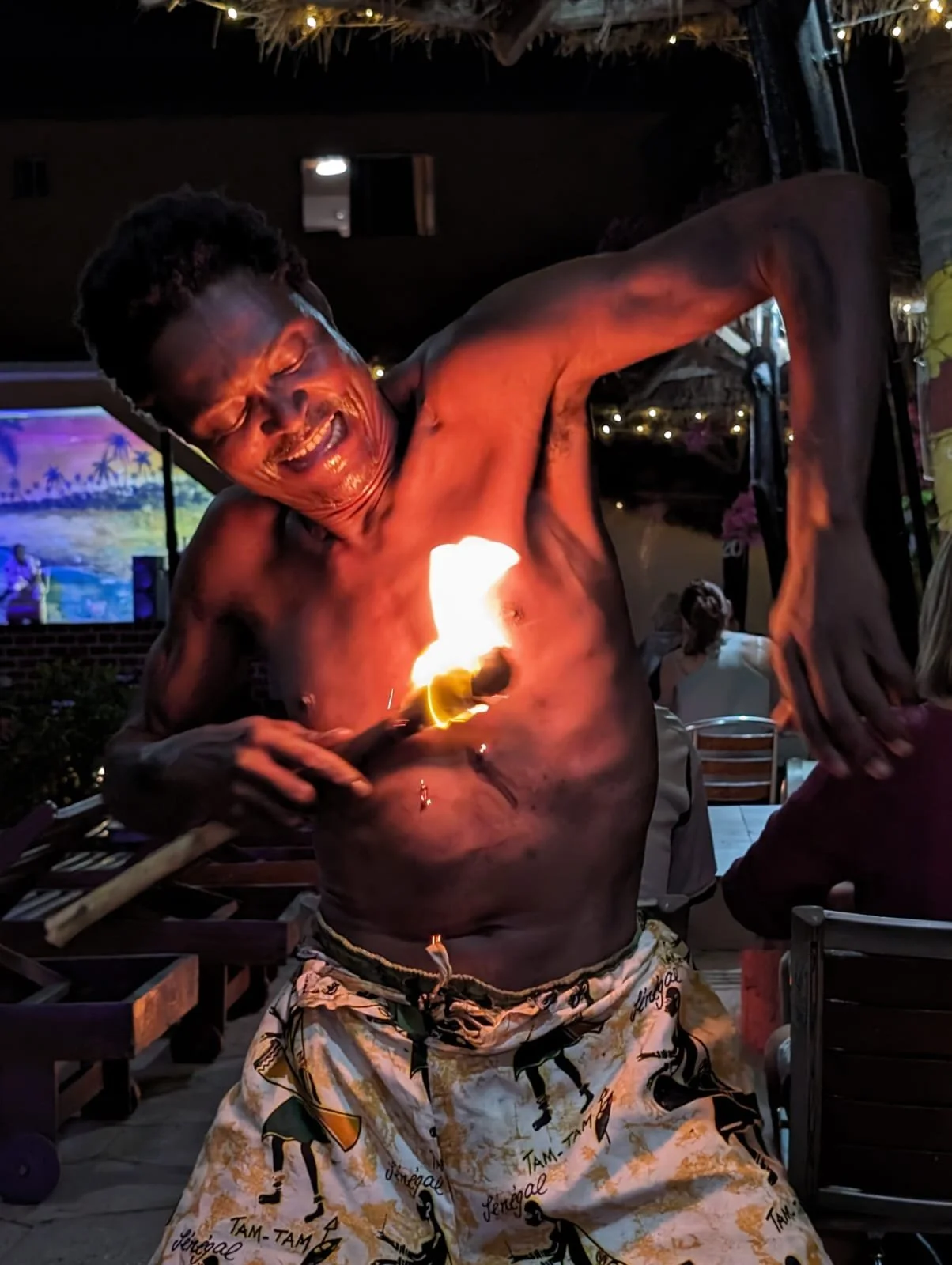
Communication through Art
Art via Culture
Culture in Translation
Communication and Cultural Exchange via authentic, hand-crafted, ethnic art and crafts from various African artists.
Zuri Cultural Expressions
Most Recent
Bamoun Local Art & Crafts
Walter Fon Art Collection
Gambian Fire Dancer
Coming Soon!
FEATURED
The Walter Timah Fon Art Collection
Our artist, Timah Walters Fon, was born in Besi, a small village in the Batibo subdivision of North Western Cameroon. Despite the village lacking amenities, he received basic education at the local government school. At first rejected for school due to a physical test, he started at age 7 and showed a knack for art, crafts, and storytelling. Limited school supplies didn't hinder his passion for drawing.
He stopped going to school when his father died, as the family faced money problems. He became the main provider at 11 years old after his father's sudden death. To help his family, he left school, lived with his Aunt, and learned a trade from a local mechanic. Despite the hard work as an apprentice, he found time to draw using simple materials like grass and twigs. With support from his teacher and impressed people, including customers at the auto shop, he convinced his mother to let him focus on art. From 2006 to 2009, he worked as a sign painter and writer for a local business, earning money. In his free time, he continued creating art while learning more about art and developing his unique natural style, which he is known for today.
In 2009, he came back home to his mother, facing the toughest time of his life. He relied solely on his art and design skills, taking care of his mother, tackling various challenges in his creative career. To step up his work, he needed new but costly supplies, which were hard to come by. He recalled visiting Bottle Peak, a town near the mountain with the same name, in the Bakossi mountain range, to purchase his initial acrylic paint set.
One of his significant journeys was to Bamenda, a bustling city of 2 million people, which was a stark contrast to his previous life in the quiet village of Besi. This trip provided valuable insights into diverse cultures, languages, and artistic expressions. Accompanied by a sponsor, he underwent an apprenticeship where he crafted art for personal and business use. Despite modest benefits initially, his sponsor, a prince from the Batibo royal family, eventually facilitated the establishment of a larger workshop in Guzang. Over time, he shifted his focus to art and crafts, gaining recognition and success in his field. In 2013, he relocated to Batibo, where he mentored six individuals in the art of signage and his unique artistic techniques.
Life improved but feeding family remained a worry. A delayed paycheck meant going hungry. Artists often struggle this way, a universal experience testing mental strength.
In 2018, there were political issues as the Ambazonians tried to break away from Cameroon. The government won after a strong fight, enforcing martial law. Locals suffered displacement and hardships like restricted movement, lack of resources, and broken homes. Walters lost his workshop, connection to his roots, and students. To protect his family, he moved to Limbe to rebuild his life.
He reopened his workshop, teaching local art using natural materials. Limited access to traditional items hinders his expression. Art blends history, politics, and culture teachings from Batibo. Personal works offer insights into Batibo/Mugahamo traditions.
Walters, without much formal education, felt unsure but pushed himself to achieve more. He deeply studied the traditions of his people and shared their stories, caring most about encouraging freedom of expression for all, especially the youth.
The Batibo region in Cameroon boasts a rich and vibrant culture, characterized by its expressive music, traditional attire, captivating artistry, profound folklore, and time-honored rituals that collectively define its exceptional heritage. The local population's way of life is deeply intertwined with the surrounding natural environment, reflecting a harmonious coexistence through their daily routines. Situated amidst the striking landscapes between the Savannah and lush tropical forests, Batibo serves as a cultural crossroads nestled between Bamenda and Nigeria, with rivers meandering towards the nearby Atlantic coast. Within this region lies the picturesque Besi village, among many others, all contributing to the cultural tapestry of Batibo subdivision. Despite its cultural significance, Batibo faces challenges due to the ongoing conflict with the Anglophone separatist group known as the Ambazonians, which has led to unrest and tragic consequences since early 2018, casting a shadow over this once-peaceful enclave.
Batibo is a vital hub for Moghamo people, housing farmers, traders, and craftsmen. It's known for its exceptional Palm Wine brewing. The area is inhabited by Moghamo people with deep cultural ties to the region.
Materials Used
Wood
Sand
Local River Stones
Grass/Twigs
Gourds (Calabash)
Melon (Egusi) Seeds
If you know what you are looking for, you will not be afraid
Amǝ kyeri aghi ne àghò ya kèbǝ̀ chǝyi àghò biri bɔ
Pa Jonas Andon and his understanding wife
lnǝbi pa Jonàs tè ayi mǝd ni kyeri ikuchèg mǝd
The palace is empty and the chief is hiding in the hands of the enemy
Ingaku ze ijǝ. Ifɔn we nǝmbǝyi inga nǝb abǝ wèd ìbɔ̀ŋ
Crying when going to Ashong - returning to Bessi happy
Ndi dèghè ghǝ Ashɔ̀ŋ se ye'e a
Bessì tì ìgyendi
Coming Up
Coming Soon












